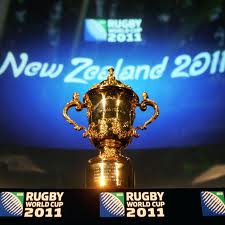 Omega-3 fatty acids are essential nutrients that the body cannot make, so they must come from food sources. DHA, the major omega-3 fatty acid concentrated in the brain, is important throughout life for optimal brain development and function. Seafood is a major dietary source of omega-3 fatty acids. Previous studies have associated low levels of omega-3 fats or low dietary intake of seafood, with suicide, thoughts of suicide, and depression. Many, but not all, treatment studies also have reported mental health benefits of supplemental DHA, including reduced anxiety, depression and risk of psychosis.
Omega-3 fatty acids are essential nutrients that the body cannot make, so they must come from food sources. DHA, the major omega-3 fatty acid concentrated in the brain, is important throughout life for optimal brain development and function. Seafood is a major dietary source of omega-3 fatty acids. Previous studies have associated low levels of omega-3 fats or low dietary intake of seafood, with suicide, thoughts of suicide, and depression. Many, but not all, treatment studies also have reported mental health benefits of supplemental DHA, including reduced anxiety, depression and risk of psychosis. A new study suggests that low levels of the highly unsaturated omega-3 essential fatty acids, in particular DHA, may be associated with increased risk of suicide. Researchers at the Uniformed Services University of the Health Sciences (USU) and the National Institute of Alcoholism and Alcohol Abuse (NIAAA) at the National Institutes of Health (NIH) drew this finding following analysis of a large random sampling of suicide deaths among U.S. military personnel on active-duty between 2002 and 2008. The results of this retrospective study appear in the August 23 online version of the Journal of Clinical Psychiatry.
 Army Col. (Dr.) Michael D. Lewis, lead author on the study and assistant professor in the Department of Preventive Medicine and Biometrics at the USU expressed his interest in the findings: “We were surprised to find just how low the levels of omega-3 fatty acids were in the entire sample,” and further commented “There still was a significant suicide risk when we stratified the population. When we compared the 1,400 samples with the lowest levels of DHA to the remaining 200, there was a 62 percent increased risk that the samples were from a documented suicide. We need to continue to evaluate these results with a well-designed interventional study, but this represents a potential simple nutritional intervention that warrants further investigation.”
Army Col. (Dr.) Michael D. Lewis, lead author on the study and assistant professor in the Department of Preventive Medicine and Biometrics at the USU expressed his interest in the findings: “We were surprised to find just how low the levels of omega-3 fatty acids were in the entire sample,” and further commented “There still was a significant suicide risk when we stratified the population. When we compared the 1,400 samples with the lowest levels of DHA to the remaining 200, there was a 62 percent increased risk that the samples were from a documented suicide. We need to continue to evaluate these results with a well-designed interventional study, but this represents a potential simple nutritional intervention that warrants further investigation.”“Our findings add to an extensive body of research that points to a fundamental role for DHA and other omega-3 fatty acids in protecting against mental health problems and suicide risks”.
SO it's great news for lovers of seafood or vegetarians consuming flax that another benefit of Omega-3 is exposed in research papers, and suggests that 'Fish on Friday' should perhaps be extended throughout the week!









